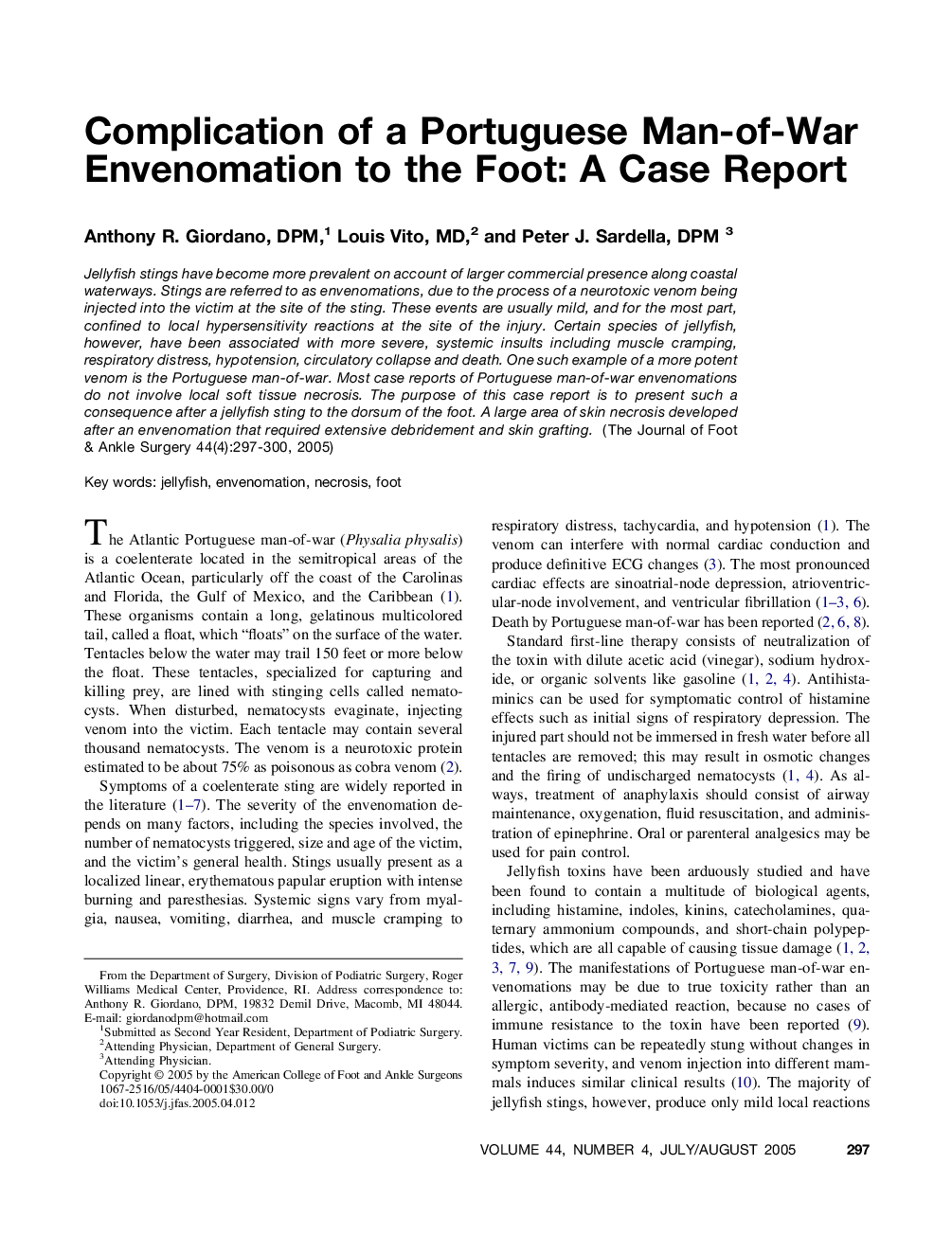| Article ID | Journal | Published Year | Pages | File Type |
|---|---|---|---|---|
| 9928660 | The Journal of Foot and Ankle Surgery | 2005 | 4 Pages |
Abstract
Jellyfish stings have become more prevalent on account of larger commercial presence along coastal waterways. Stings are referred to as envenomations, due to the process of a neurotoxic venom being injected into the victim at the site of the sting. These events are usually mild, and for the most part, confined to local hypersensitivity reactions at the site of the injury. Certain species of jellyfish, however, have been associated with more severe, systemic insults including muscle cramping, respiratory distress, hypotension, circulatory collapse and death. One such example of a more potent venom is the Portuguese man-of-war. Most case reports of Portuguese man-of-war envenomations do not involve local soft tissue necrosis. The purpose of this case report is to present such a consequence after a jellyfish sting to the dorsum of the foot. A large area of skin necrosis developed after an envenomation that required extensive debridement and skin grafting.
Keywords
Related Topics
Health Sciences
Medicine and Dentistry
Orthopedics, Sports Medicine and Rehabilitation
Authors
Anthony R. DPM, Louis MD, Peter J. DPM,
